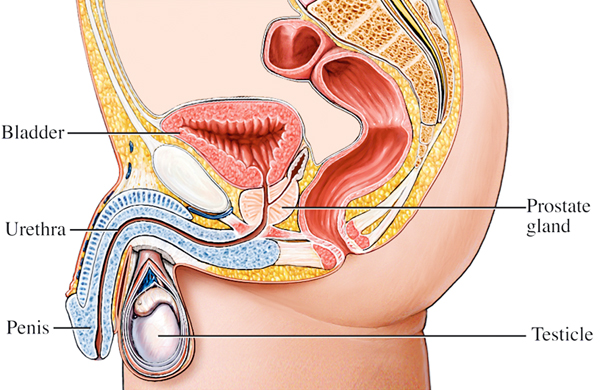Dr. Ajay Anand
Benign Prostate Hyperplasia (BPH) affects significant percentage of men above age of 50 years, with lower urinary tract symptoms (LUTS) – irritative, obstructive or both. Patients with BPH in due course of time are at risk of symptom deterioration, acute urinary retention (AUR) and BPH related surgery. There are various treatment options for men with symptomatic BPH, which include active monitoring, medical therapy with alpha blockers and/or 5-alpha reductase inhibitors (ARI) and surgery. Although transurethral resection of prostate (TURP) has been accepted as the gold standard treatment for BPH, significant number of patients are routinely offered medical treatment, either alpha blockers, 5-alpha reductase inhibitors, or combination of two.
Efficacy of improvement in symptoms of BPH with medical treatment has been well documented but uncertainty exists as to which treatment option is best for an individual. Significant number of patients find no or little improvement in symptoms with medical treatment and finally need surgical treatment for BPH. Patients who respond well to the medical treatment also become resistant to it in 5 to 7 years and finally undergo surgical treatment.
Medical treatment is started in men with LUTS and BPH by alpha-blockers, 5 ARI or combination of both.
* Superselective alpha 1 A blockers, owing to minimum side effects, are commonly used nowadays which act on aplha 1A receptors and cause relaxation of smooth muscle.
* 5 alpha reductase inhibitors act on stroma of prostate and cause shrinkage of prostate size.
* Other rarely used drugs include Tadalfil which has recently been approved for use in BPH
* Patients with predominant irritative symptoms in form of urgency need to be put on anticholinergics in addition to above medical treatment options.
Though medical management initially relieves symptoms in good number of patients but a significant number continue to persist with symptoms or have persistent abnormalities on ultrasonogram like increased postvoid residual urine volume and/or abnormal uroflometry parameters.
Benefits of combination therapy are short-lived and surgical treatment has to be offered to a significant number of patients, owing to persistence/resurgence of symptoms, patient’s inability to afford medical treatment, worsening of symptoms inspite of being on medical treatment. Some patients demand surgery because of their inability to come for follow-up visits and desire for one-time curative treatment rather than suppressive medical treatment which usually is required lifelong.
Medical treatment is also having significant side-effects in form of erectile dysfunction, dizziness, postural hypotension, asthenia, decreased libido, abnormal ejaculation, peripheral edema, dyspnea, allergic reaction, and somnolence. Medical treatment for a prolonged period is not justifiable due to associated side effects, which may decrease quality of life of the patient.
Patients with persistent symptoms inspite of being on medical treatment, IPSS (International Prostate symptom Score) more than 21, prostate volume more than 50 cm3 associated with intravesical projection, acute urinary retention, raised serum PSA (but proven benign gland on biopsy), backpressure changes with or without rise in urea and creatinine should be offered early surgical treatment, as these patients are at risk of failure of medical treatment. Other proven indications for surgical treatment include recurrent urinary tract infections, associated vesical calculi, hematuria because of BPH.
The costs of medical therapy are not affordable by some patients. Long-term cost for effective management for benign prostatic hyperplasia remains an important issue in pharmaco-economics.
Considering significant number of patients having BPH and being put on medical treatment for a significant longer period of time, overall calculated costs of medical treatment for BPH are much higher than one-time surgical treatment for BEP. Costs of medical treatment include not only cost of medicines, but also cost of frequent follow-up visits to hospital and frequent investigation monitoring to assess patient’s response to treatment. Patients who have medical treatment for more than 6 months are more likely to need surgical treatment. Such patients not improving with medical treatment within 6 months can be advised for surgical intervention, so as to reduce need for unwanted medical treatment for a condition which can be treated surgically.
(The author is presently working as consultant in Superspeciality Hospital, GMC, Jammu)
Trending Now
E-Paper


